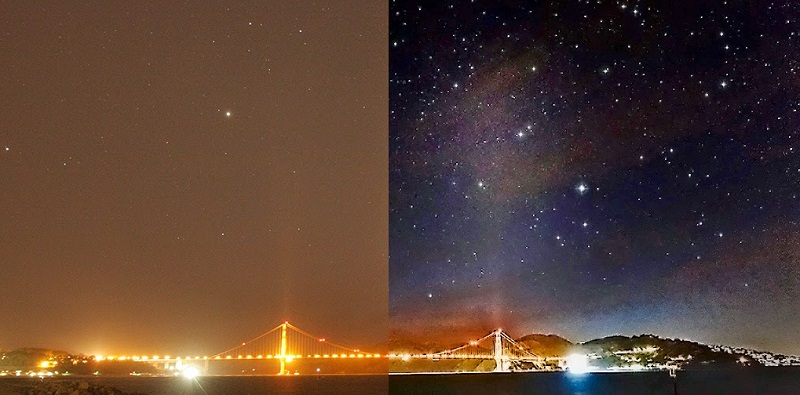We sometimes have people approach us about a concept called Dark Sky lighting. It’s a fairly new concept in general and certainly new to us. Our initial reaction was ‘Dark Sky lighting? Sounds apocalyptic’, but upon further research we learned that this Dark-Sky movement is actually pretty cool.
It’s actually something that I, personally, have felt passionate about, but didn’t realize there was an existing initiative quite like Dark Sky. I’ve always appreciated the stars. Some nights when I was younger I would just lay under the stars and watch the activity for hours. It wasn’t until my family moved out of the city that I was able to do this, though. Growing up in the city you just don’t comprehend how much of the sky you can see without light pollution.
That’s what Dark Sky lighting is all about. Changing the perception of our view of the sky and educating people to make conscious decisions with their lighting. Here, we want to give people a basic understanding of Dark Sky lighting and how you can use it to help clear up the sky in your community.
The Impact of Light Pollution
It’s no secret that once you’re within even, say 30 miles of a city, that visibilty of the sky drops dramatically. Once you’re in the city, nearly all bets are off for getting a good view of the surrounding star system not to even mention the Milky Way. There is a way, however, that we can reverse this trend and open our city skies back up.
Although you can help the problem with approved Dark Sky lighting at your home, street lights provide the majority of light pollution on the planet. Think of all the empty parking lots and random side streets lit by tall street lamps. That’s a ton of raw light just pouring into the sky.

Not to mention the atmospheric polution caused by that much light…
To put it into perspective, a 100w light bulb lit every night for a year burns 1/2 ton of coal, which amounts to over double that in Co2 emissions at appx 1.5 tons.
Fortunately, there is Dark-Sky lighting already available for commercial use. What’s even better is that most of the Dark Sky lighting uses LED bulbs, which you know from our article on the benefits of LED lighting, we’re a fan of.
Types of Light
It’s important that we make the distinction between various kinds of light and their impact on the night sky. When it comes to Dark Sky lighting all lights are not equal. Most household lights are either incandescent or compact flourescent, but there are a couple other types of light worth mentioning.

Low Pressure Sodium Lighting (LPS) is probably the least visually appealing of the types of light commonly found to light city streets. It emits an odd orange color that gives the surrounding area an interesting tinge, which isn’t often preferred in urban environments. These lights can be used in environmentally sensitive areas due to the lack of blue light. It’s this limited range of light emission that make this type of light a favorite among astronomers.
High Pressure Sodium Lighting (HPS) emits a more natural appearing light, despite the slight orange that is still emitted. HPS lights are typically used on major roadways and freeways. Although these lights have a longer lifespan than LPS lights, they are much less efficient. It takes more energy per unit of light emitted than the LPS.

We’ve covered LED lighting before here, but we had to mention them in this article.
There are numerous types of lights out there, which all have attributes that contribute to light pollution, but what it really comes down to is minimizing the amount of blue light, light direction, and making sure each light has the proper casing to prevent unecessary pollution.
Where Dark Sky Comes In
The International Dark Sky Association (IDA) has made it a mission to provide guidelines and education to all of us in the pursuit of getting back our view of the night sky. IDA has laid out clear and simple to follow guidelines that, if each of us played a small part in following, will help achieve a much more beautiful view of the stars.
Really, it’s pretty simple. Here are the recommended guidlines as posted on their site:
- Only be on when needed
- Only light the area that needs it
- Be no brighter than necessary
- Minimize blue light emissions
- Be fully shielded

It’s not just about restoring a pretty view either. Light pollution has become so severe that it’s affecting ecosystems as well. These are all things to consider when you’re working with Landscape Lighting Pros to design your lighting system.
Thanks for taking the time to read! Let us know what you think about the Dark Sky lighting movement in the comments below. If your home is Dark Sky certified we’d love to see pictures!
Talk with a Landscape Lighting Pros specialist today and schedule a free 3-day trial!

